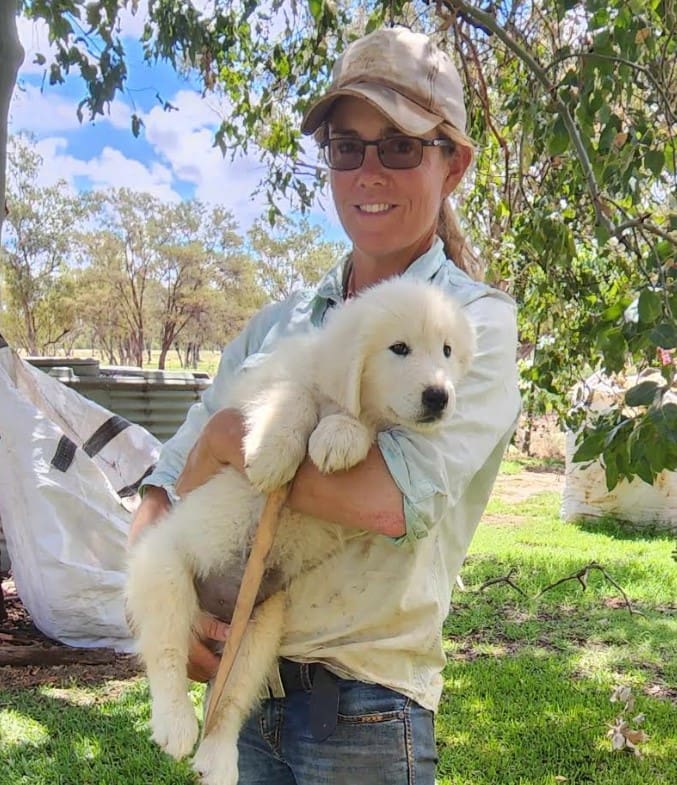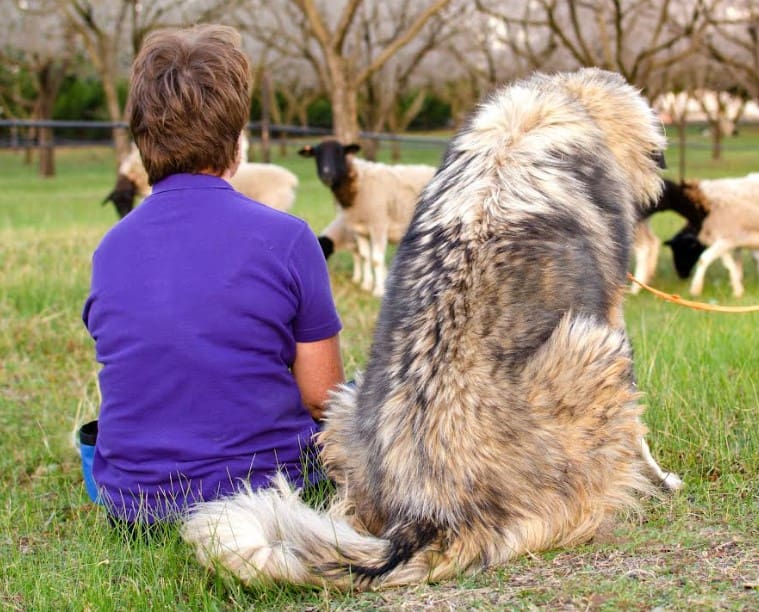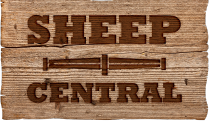
Julie Brown with a Maremma pup.
LIVESTOCK guardian dogs were underutilised in managing wild dog and dingo impacts in Australia, according to a leading proponent.
Livestock Guardian Dogs Australia founder Erin Williams was a speaker at the first national Livestock Guardian Animal Forum in Canberra last month.
Livestock guardian dogs, fencing and other non-lethal options have been recommended to producers by dingo supporters and the Victorian Government as an alternative to lethal control of dingoes and wild dogs.
However, Ms Williams said livestock guardian dogs are not the total solution in all situations, “but in some situations they are.”
She said the dogs are used extensively in the United States where predator baiting is banned.
“That’s why they have been very successful over there, because they haven’t had alternatives to use when we’ve relied principally on lethal controls.”
Ms Williams said she focussed on the importance of correct training and management of the dogs and education of the handlers for success. She said guardian dogs were underutilised here, “
“due to the lack of robust education in how to implement a successful LGD strategy and the amount of misinformation is common.”
“Misinformation sets producers up for failure and then the dogs as a suitable option, attract negativity.”
But she believes guardian dogs could be the solution for wild dog and dingo management in most situations with the proper training management and education, “because that’s what is missing.”
She believes it should be up to each “practitioner”, what dingo management methods will be employed, but she recognises the need for more research on the use of lethal control with guardian dogs due to the risks it poses to the dogs’ lives.
Ms Williams said she was struck by the collaborative and open-minded approach of the delegates.
“I felt that this forum was groundbreaking in bringing esteemed stakeholders together for the first time, despite their differing views and approaches.
“One of my key takeaways was that we need to provide robust science-based best practice education in how to use livestock guardian animals effectively to prevent the continued dissemination of misinformation, and to prevent failures,” he said.

Erin Williams and a friend watch a flock of sheep.
“I also found that if we work together with what we all bring to the table, we have the potential for effective control options to suit each individual producer or region.”
Livestock producer and veterinarian Julie Brown uses guardian dogs on her family’s property and agreed that the collaboration at the forum was a highlight.
“It was great to work with other livestock producers, members of government and researchers who work in predator management and compare experiences and ideas,” said Dr Brown.
Dr Brown said guardian dogs are best used in combination with other tools, namely fencing and lethal predator management, that keep predator populations under control.
“For me, the event reiterated that there is no silver bullet to predator control, especially in extensive grazing situations when properties are large, and livestock are spread out.
“Livestock guardian animals are incredibly effective when they are implemented well and when predator pressure does not exceed their capabilities,” she said.
“Knowledge and support are also required to effectively implement livestock guardian animals – there must be information and resources available for producers to reduce the failure rate of using livestock guardian dogs.
National Wild Dog Management coordinator from the Centre for Invasive Species Solutions Greg Mifsud praised the event as an important opportunity to bring together diverse perspectives on the use of guardian animals, such as Maremma dogs and donkeys, in managing wild dog and dingo impacts.
“This forum has been an invaluable opportunity to exchange ideas, experiences, and expertise in the use of guardian animals, as a tool to manage the effects of wild dog and dingo populations.
“It was interesting to hear how different producers had varying levels of success with guardian animals and the many factors that can impact their effectiveness,” he said.
“A key takeaway for me was that guardian animals are not a panacea, with landholders reporting that they lost livestock even in the presence of guardian animals.
“However, when implemented as part of an integrated wild dog and dingo control program, they were very effective at reducing those impacts.”
The forum was delivered to investigate the applicability and effectiveness of guardian dogs and other animals to protect livestock from wild dog and dingo attack across Australia’s diverse agricultural grazing and production systems. It also explored what factors need to be in place to improve the effectiveness and efficiency of livestock guardian animals. Outcomes from the forum will inform the national approach to the use of livestock guardian animals as a tool to manage wild dog and dingo impacts.
The forum was hosted by the National Wild Dog Action Plan with funding from the Australian Government Department of Agriculture, Fisheries and Forestry and Parks ACT. It provided a platform for sharing knowledge and insights on the practical application of livestock guardian animals across a range of grazing environments, production systems, and landscapes, with the aim of enhancing livestock protection and biodiversity.
For more information about wild dog control in Australia, visit the National Wild Dog Action Plan website here.

HAVE YOUR SAY